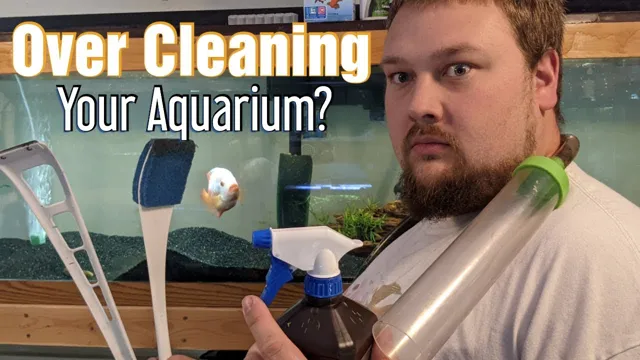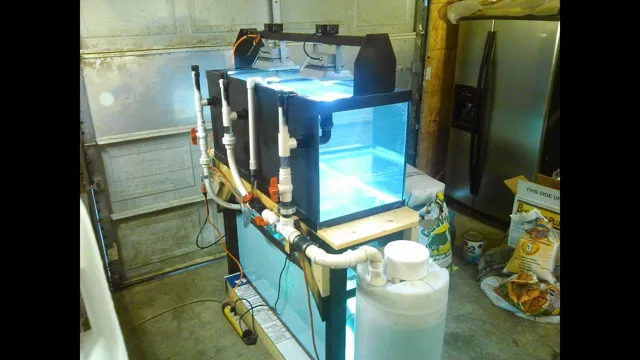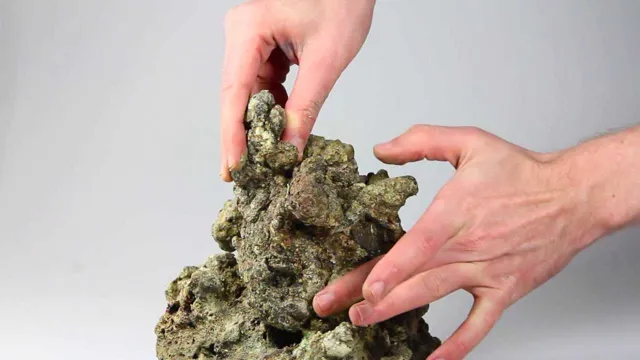Keeping an aquarium is a rewarding and relaxing experience. It allows you to showcase aquatic life and also provides therapeutic benefits. However, maintaining an aquatic environment can be a daunting task, especially when it comes to cleaning.
Wiping the aquarium may seem like a simple task, but it is essential to do it properly and regularly to keep your fish and other aquatic creatures healthy. In this blog, we will discuss how often you should wipe your aquarium and why it is crucial for the well-being of your aquatic pets. So, let’s dive in!
Factors That Affect How Often to Wipe Your Aquarium
Wiping down your aquarium is an important task that should be done periodically, but how often you do it depends on a few factors. First and foremost, the type of fish you have will have an impact on how often you need to wipe the tank. If you have species that produce a lot of waste or are particularly messy eaters, you may need to wipe the tank down more often.
Additionally, the size of your aquarium and the filtration system you have in place can also affect how often you need to wipe the tank. A larger tank with a good filtration system may not need to be wiped down as often as a smaller tank with poor filtration. Finally, if you notice excessive algae growth or debris buildup on the tank walls, it’s time to break out the sponge and give the tank a good wipe down.
As a general rule, wiping down your aquarium once a week is a good starting point, but pay attention to the factors mentioned above to determine if you need to do it more or less frequently to keep your fish happy and healthy.
Size of the aquarium
When it comes to maintaining the cleanliness of your aquarium, there are a few factors that affect how often you should wipe it down. One of these factors is the size of the aquarium. The larger the aquarium, the less frequently you may need to wipe it down.
However, it’s important to note that the frequency of cleaning also depends on the number of fish living in the aquarium. A larger aquarium may be able to accommodate more fish, which in turn may increase debris and waste buildup. Essentially, the more fish you have in your aquarium, regardless of size, the more often you’ll need to wipe it down.
It’s recommended to wipe down the inside of your aquarium as needed, with weekly maintenance being ideal for most aquarium owners. This will help ensure the health and well-being of your fish, while keeping your aquarium looking clean and beautiful.

Type of aquatic creatures in the aquarium
When it comes to maintaining your aquarium, knowing how often to wipe it down can depend on a variety of factors. The first thing to consider is the type of aquatic creatures that you have living in your tank. Some fish, for example, produce more waste and therefore require more frequent cleaning.
Additionally, the size of your aquarium plays a role in how often you need to wipe it down. Smaller tanks will accumulate debris faster and require more frequent maintenance than larger ones. Another factor to consider is the frequency and amount of feedings.
Overfeeding your fish can lead to excess waste buildup, which can necessitate more frequent cleaning. Finally, the type of filtration system that you use can impact how often you need to wipe down your aquarium. If you have a high-quality filtration system, you may be able to go longer between cleanings.
Ultimately, it’s important to monitor your aquarium regularly and adjust your cleaning schedule as necessary to keep your aquatic pets healthy and happy. Keyword: wipe your aquarium.
Amount of light the aquarium receives
When it comes to maintaining a healthy and happy aquarium, the amount of light your fish tank receives is a major factor that affects how often you should wipe it down. If your aquarium is exposed to direct sunlight, algae will quickly grow and cover your glass walls and decorations, making it harder for your fish to thrive and enjoy their home. In addition, you should also consider how long you leave your aquarium light on each day.
Overexposure to light can lead to an overgrowth of algae and unwanted bacterial growth, which can harm your fish and other aquatic life. To prevent this, be sure to keep your aquarium light on for just the right amount of time each day, providing your fish with the appropriate amount of light they need to thrive. By monitoring the amount of light your aquarium receives, you can ensure that your tank remains clean and healthy for your aquatic pets to enjoy.
Frequency of feeding the fish
The frequency of feeding your fish depends on several factors. Firstly, the type of fish you have will determine their dietary needs. Some fish species have short digestive tracts and require frequent feeding while others can go for days without food.
Secondly, the size of your aquarium plays a role. A smaller tank will require more frequent feedings as food will quickly deplete, while a larger tank will have a more stable environment allowing for less frequent feedings. Thirdly, the age and size of your fish should be taken into consideration. (See Also: How to Get Aquarium Levels Down: Tips and Tricks for Maintaining Optimal Water Quality)
Younger and smaller fish typically require more feedings as they need to consume more food to gain weight and grow. Lastly, the temperature of your aquarium water affects the rate of fish metabolism. Higher water temperatures increase the rate of digestion, requiring more frequent feedings.
In conclusion, it is essential to understand your fish’s dietary needs and their environment to determine the proper frequency of feeding.
The Importance of Regular Aquarium Maintenance
Regular maintenance is a crucial aspect of owning an aquarium. Not only does it ensure that your aquatic pets have a clean and healthy environment to thrive in, but it also helps to prevent the development of harmful bacteria and algae that could potentially harm your fish. So, how often should you wipe your aquarium? Well, it depends on a few factors such as the size of your tank, the number of fish you have, and the type of filtration system you use.
Generally speaking, it is recommended that you perform a partial water change of around 10-20% of the tank’s volume once a week. This involves removing any debris from the gravel, wiping the interior of the glass to remove any algae buildup, and then replacing the water. In addition to this, you should also check the pH levels and temperature of the water regularly to ensure that they are within the appropriate range for your fish.
By keeping up with regular maintenance, you can help to ensure that your aquarium remains healthy and your fish stay happy for years to come.
Preventing buildup of debris and algae
Regular aquarium maintenance is essential to prevent the buildup of debris and algae in your aquatic environment. Neglecting this vital aspect of aquarium care can lead to a range of problems for your fish and other inhabitants, including diseased fish, murky water, and an unpleasant odor. Algae growth in particular can be especially troublesome, as it can quickly take over the tank and turn it into a slimy mess.
The best way to avoid these issues is to keep up with regular aquarium maintenance, which includes tasks like cleaning the tank, monitoring water quality, and keeping equipment functioning properly. By staying on top of these tasks, you’ll be able to enjoy a clean, healthy aquarium that’s home to happy fish and thriving aquatic plants.
Maintaining water quality and clarity
Maintaining water quality and clarity in your aquarium is vital for the health and happiness of your aquatic pets. This is why regular aquarium maintenance is so important. By performing routine water changes, testing the water’s pH levels, and cleaning the aquarium equipment, you can ensure that your fish and plants thrive in a healthy environment.
Neglecting to maintain your aquarium can result in a buildup of harmful chemicals, algae growth, and bacterial infections, which can be detrimental to the health of your aquatic pets. Think of it like changing the oil in your car or brushing your teeth: regular maintenance prevents bigger problems down the road. So, take the time to care for your aquarium, and your fish will thank you for it!
Preserving the health of aquatic creatures
Regular aquarium maintenance is a crucial aspect of preserving the health and well-being of aquatic creatures. Many people tend to overlook or neglect the importance of providing clean water, proper filtration, and adequate nutrition to the inhabitants of their aquariums. However, neglecting these crucial aspects can lead to a host of problems.
An unkempt aquarium can become a breeding ground for deadly bacteria, algae, and other harmful organisms that can cause disease and death among your aquatic pets. It can also lead to insufficient oxygen in the water, which can be harmful to fish and other aquatic creatures. Additionally, improper feeding can lead to malnutrition, stunted growth and other health problems.
Regular aquarium maintenance, including water changes, cleaning of filters, testing water quality, and maintaining proper nutrition, can prevent all these problems and ensure the health and longevity of your aquatic creatures. Remember to prioritize your aquarium’s maintenance to keep your pets healthy and thriving!
How to Determine How Often to Wipe Your Aquarium
If you’re wondering how often to wipe your aquarium, the answer depends on a few factors. One important factor is the type of aquarium you have and the type of fish or plants you keep in it. Generally, you should wipe your aquarium once a week to remove any algae or debris that has accumulated on the walls and bottom.
However, if you have a heavily populated aquarium or one that is prone to algae growth, you may need to wipe it more frequently. It’s important to use a gentle, aquarium-safe cleaner when wiping down your tank so as not to harm your plants or fish. By staying on top of regular wipe downs, you can help ensure a healthy and thriving environment for your aquatic pets.
Inspect your tank on a regular basis
Inspecting your aquarium on a regular basis is crucial in determining how often you should wipe it. It’s important to keep track of the buildup of algae and debris that may affect the water quality and eventually harm your fish. If your tank has high levels of light exposure and nutrient-rich water, expect a rapid growth of algae. (See Also: How to Get pH Down in Freshwater Aquarium: Tips and Tricks for a Healthy Tank)
In this case, you might need to wipe your tank more often, maybe once a week or more. However, if your tank is well-maintained and has minimal light exposure, you could go several weeks before wiping. Remember, every tank is different, and gauging the frequency of wiping mainly relies on your tank’s needs.
Don’t fret about how often you should wipe your aquarium; instead, make a habit of inspecting it regularly and cleaning it when necessary. A clean aquarium fosters a healthy and beautiful aquatic environment for your fish and plants to thrive.
Assess the level of debris and algae buildup
Assessing the level of debris and algae buildup in your aquarium is a crucial step in determining how often you need to clean it. The amount of debris and algae will depend on various factors such as the size of your aquarium, the number of fish, and the type of filtration system you use. If you notice a significant buildup of debris or algae, it’s time to tackle the mess with a good cleaning session.
On the other hand, if the level of buildup is minimal, you can hold off cleaning for a bit longer, but don’t wait too long as it can cause problems for your fish and their environment. Remember, a dirty aquarium can lead to health issues for your fish and even cause them stress, so it’s essential to keep on top of it. By regularly assessing the level of debris and algae buildup, you can determine how often to wipe your aquarium and ensure the well-being of your aquatic pets.
Consider the factors that affect how often to wipe your aquarium
If you’re a fish enthusiast, one question you might be asking is, “How often should I wipe my aquarium?” Unfortunately, there’s no one-size-fits-all answer. Several factors influence how frequently you should clean your aquarium. One of the most significant factors is the size of your aquarium.
A larger aquarium will require less frequent cleaning than a smaller one. Additionally, the number and types of fish you have will play a role. Overstocking your aquarium can lead to excess waste, necessitating more frequent cleaning.
Finally, how much you feed your fish will impact how often you need to wipe your aquarium. If you feed your fish often, they will produce more waste, which will need to be cleaned more frequently. Ultimately, the best way to determine how often to wipe your aquarium is to monitor it closely and clean it as needed.
By keeping an eye on the factors outlined above, you’ll be able to find the cleaning schedule that works best for you and your aquatic pets.
Tips for Wiping Your Aquarium
When it comes to maintaining a clean and healthy aquarium, wiping it down can make a big difference. But how often should you wipe your aquarium? The answer depends on a few factors, such as the size of your tank, the number of fish you have, and how much algae growth you’re experiencing. As a general rule, it’s a good idea to wipe down the sides of your aquarium once a week to remove any algae or debris that may have accumulated.
However, if you notice excessive amounts of algae or your fish are showing signs of stress, you may need to wipe down the tank more frequently. Remember to only use a clean, soft cloth or sponge that’s dedicated for aquarium use and avoid using any harsh chemicals or cleaners that could harm your fish or damage your equipment. By keeping up with regular cleanings, you can help ensure that your aquarium remains a healthy and beautiful environment for your fish to thrive in.
Use a clean cloth or sponge
When it comes to maintaining a healthy aquarium, cleaning is a crucial aspect. However, it’s essential to ensure that you’re not harming your pets while cleaning their home. Using a clean cloth or sponge is one essential tip to keep in mind when wiping your aquarium.
Avoid using harsh and abrasive materials that can scratch or damage the glass or plastic components of your tank. Using a dirty or contaminated sponge can introduce harmful bacteria or chemicals into your aquarium, causing health problems for your fish and other marine life. Therefore, always remember to use a clean cloth or sponge to avoid any issues that may arise and maintain a happy, healthy aquarium.
Avoid using harsh chemicals
When it comes to cleaning your aquarium, it’s important to avoid using harsh chemicals. Instead, opt for natural cleaning solutions that are gentle on your aquatic pets and won’t harm the delicate ecosystem of your tank. One tip for wiping down your aquarium is to use a mixture of white vinegar and water, which is both effective and safe.
Simply mix equal parts vinegar and water in a spray bottle and use a clean cloth to wipe down the glass and other surfaces of your tank. Not only is vinegar a natural disinfectant, but it’s also affordable and readily available at most grocery stores. By avoiding harsh chemicals and opting for natural cleaning solutions, you can ensure a clean and healthy habitat for your aquatic pets. (See Also: How to Change Aquarium Substrate with Fish in Tank without Harm)
Do not remove all the water from the tank
When it comes to cleaning your aquarium, there are some important tips to keep in mind to ensure that you don’t harm your fish or other aquatic pets. One of the most important tips is to not remove all the water from the tank. While it may seem like the easiest way to clean the tank, it can actually cause harm to your fish.
When you remove all the water, you are also removing all the beneficial bacteria that live in the tank and help keep the water clean. This can cause the water to become cloudy and unbalanced, which can be harmful to your fish. Instead, simply remove about one-third of the water and then replace it with fresh, clean water.
This will help maintain the balance of your aquarium and keep your fish healthy and happy. By following this tip, you can ensure that your aquarium stays clean and healthy for your aquatic pets to thrive, and you can enjoy watching them swim happily in their beautiful home.
Conclusion
So, to sum it up, wiping your aquarium should be approached like washing your hands – do it when it’s needed. Keep an eye on the water conditions, the algae growth, and any debris that may accumulate in the tank. Don’t overdo it, or underdo it – find that sweet spot of wiping frequency to keep your fishy friends healthy and happy.
With all that said, remember, a clean tank means a clear view of the underwater world, and who doesn’t want that?”
FAQs
How often should I clean my aquarium?
It is recommended to clean your aquarium once a week. However, if you have a heavily stocked aquarium, you may need to clean it more frequently.
What should I use to clean my aquarium?
You can use a gravel vacuum for removing debris from the bottom of the tank and a algae scraper for cleaning the sides. It is important to use tools designated for aquarium use to avoid harming the fish or plants.
How much water should I change during a cleaning?
It is recommended to change around 20-25% of the water during a cleaning. This will help maintain a healthy balance of beneficial bacteria in the tank.
Can I clean my aquarium filter during a regular weekly cleaning?
Yes, you can clean your aquarium filter during a regular weekly cleaning. However, it is important to clean the filter media with dechlorinated water to avoid killing beneficial bacteria.
How do I know when my aquarium needs cleaning?
Signs your aquarium needs cleaning include cloudy water, algae buildup, and excessive debris on the bottom of the tank. Regular water testing can also help determine if the water quality is poor.
Do I need to remove my fish during a cleaning?
You do not need to remove your fish during a regular weekly cleaning, but it may be necessary during a deep cleaning or if you need to medicate the tank.
How do I clean decorations in my aquarium?
You can clean decorations by removing them from the tank and scrubbing them with a soft-bristled brush in dechlorinated water. Avoid using soap or harsh chemicals that can harm the fish.







